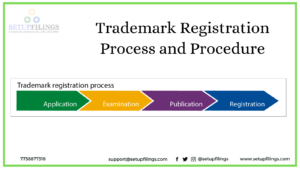Trademark Opposition
Trademark registration is that the process of registering a company’s logo, name , etc. to secure legal protection against its use by the others. But it’s not necessary that the trademark that you simply applied for will surely get selected. There are two circumstances wherein the concerned authority will refuse to register the trademark. Firstly, it’s Trademark Objection, and secondly, it’s trademark opposition.
The trademark examiner generally raises a trademark objection under Section 11 or Sections 9(1) of the Trademarks Act. However, the trademark opposition are often raised by a person under the Trademark Act of India.
Overview
Therefore, whether you would like to boost opposition against the trademark (TM) advertised within the trademark journal otherwise you have received a notice for TM opposition, you want to follow the steps of TM opposition described later during this blog. Before that, allow us to understand what TM opposition truly means.
Once you’ve got applied for trademark registration, the TM examiner will review the appliance thoroughly. If the examiner finds your application up to the mark, it’ll publish it within the Trademark Journal. the first intent for publishing your trademark within the Journal is to let others review the trademark/brand/logo and file a Trademark Opposition against it if any.
In a nutshell, a trademark opposition means raising objection against a selected trademark registration by a third-party. If anybody files an opposition against your trademark, then the trademark status will stand as ‘Opposed.’

Who is eligible to file a TM Opposition?
As per Section 21 of the Trademarks Act, 1999[1], a person or entity can file the notice of trademark opposition. These entities might be anyone, for instance , individuals, partnership firms, companies, and trusts.
There could also be a case where two different individual or entity has got to file the opposition against an equivalent trademark. In such cases, problems with both parties might be combined as opponents.
Time limit for filing an Opposition
The opponent or third party should file the TM opposition within four months from the date of the trademark published within the TM Journal. Generally, the deadline is for 3 months. However, one month is an extendible time.
Essential conditions for filing a Trademark Opposition in India
There are several grounds on which an individual can raise a Trademark Opposition. a number of them are as follows:
-
The proposed trademark resembles with the prevailing TM which somebody else has already registered.
-
The logo or name violates the symbol and Names Act, 1950 which suggests the proposed TM is prohibited under the said law.
-
The nature of the trademark is descriptive.
-
The proposed TM contradicts with the law or any law prevents it.
-
The trademark consists of name, logo, symbol, image, etc. which hurt the emotions of a specific religion, community, society or any specific class of individuals .
-
The proposed name represents bad faith.
-
The trademark is conventional within the instituted practices of a business or this language.
-
In the case, the trademark seems to cause confusion or mislead the general public .
Step1: Filing a notice of opposition
Any person or entity willing to boost an opposition or to file the notice of TM opposition against the one within the TM Journal must file within four months from the date of publishing.
Step2: Filing a counter statement
The entity can file the counter-statement within two months of the receiving of the notice of opposition. If the applicant fails to submit the counter statement within the prescribed time, then it’ll be clear that the applicant has abandoned the TM application.
Step3: Evidence regarding the TM opposition
If the applicant has submitted the Counter-Statement within the specified time, with an extendable time of 1 month, then the opponent must present the evidence via an Affidavit. within the case, the opposition doesn’t wish to submit the evidence, then he can write to the Registrar for an equivalent . Instead, he proposes to believe the matters declared within the Opposition’s notice.
Step4: Evidence in favour of Application
Once the opponent has provided the evidence in support of TM opposition, the applicant will again get three months for presenting the evidence in favour of the appliance , if any.
Step5: Again evidence back
Moreover, the Opponent again gets with two months to submit the evidence in response to the evidence of the applicant.
Step6: Hearing
Based on all the above facts, the Registrar at trademark registry shall involve a hearing. Both parties got to notify the Registrar within fourteen days of the receipt of the hearing notice. Eventually, the Registrar of Trademark will hear the matter and take the choice upon merits.
Step7: Rejection or Registration
If the evidence and facts hold valid for the applicant, the trademark will get the status of registered. Additionally, the applicant will receive the trademark registration certificate. However, if the choice is in favour of the opposition, then the trademark application will stand rejected.
Where to file the Notice of Opposition in India?
One can file the notice for TM opposition at the registry of trademark, at an equivalent place where the opposite has applied to the conflicting mark.
Suppose that you simply have applied for trademark registration in Delhi and somebody has raised an opposition against it at the Noida office. Then, you too got to initiate the proceedings within the Noida office only.









